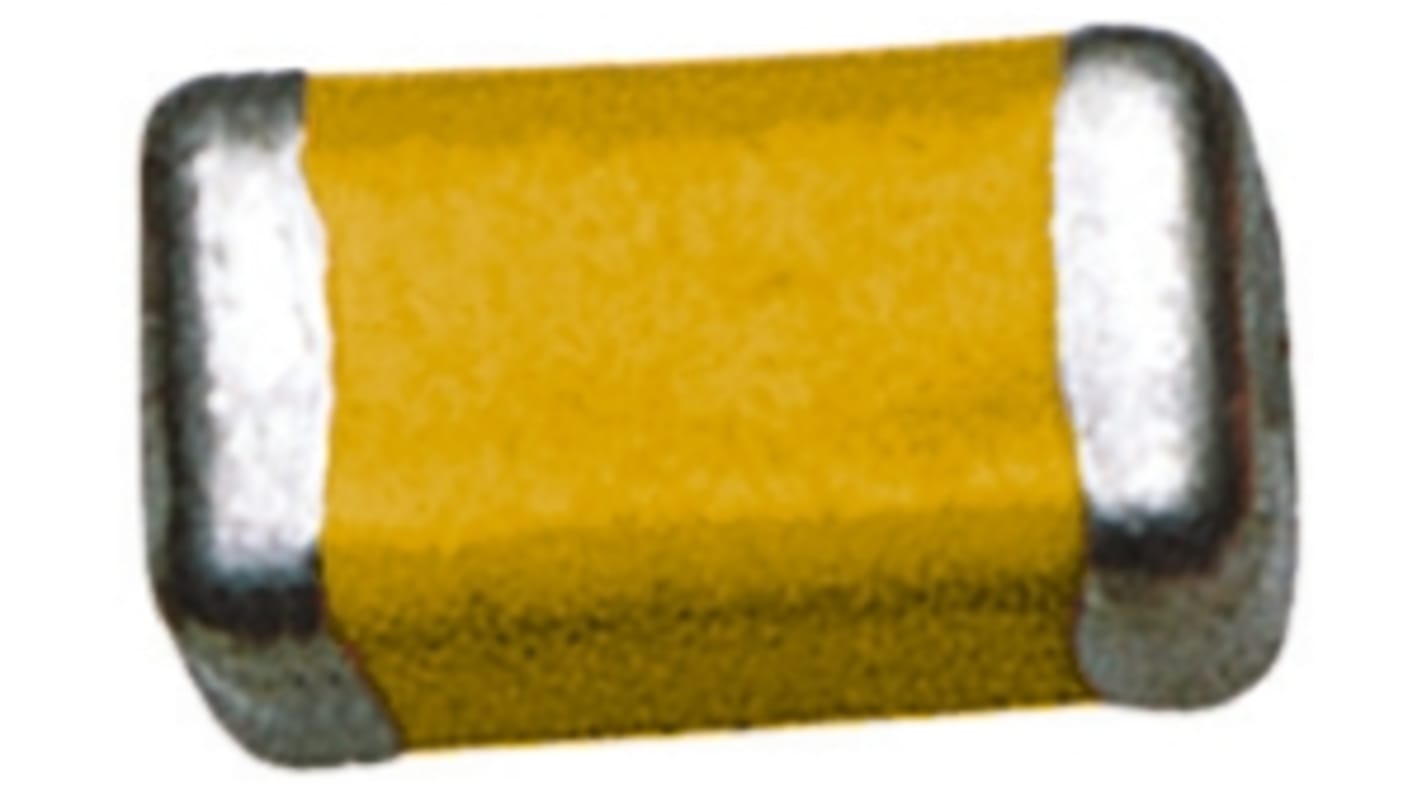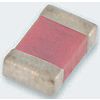Discontinued
Alternative
This product is not currently available. Here is our alternative recommendation.
Each (In a Pack of 50)
£0.012
(exc. VAT)
£0.014
(inc. VAT)
- RS Stock No.:
- 741-4522
- Mfr. Part No.:
- C2012C0G1H562J060AA
- Brand:
- TDK
Specifications
Legislation and Compliance
Product Details
Find similar products by selecting one or more attributes.
Select all | Attribute | Value |
|---|---|---|
| Brand | TDK | |
| Capacitance | 5.6nF | |
| Voltage | 50V dc | |
| Package/Case | 0805 (2012M) | |
| Mounting Type | Surface Mount | |
| Dielectric | C0G | |
| Tolerance | ±5% | |
| Dimensions | 2 x 1.25 x 0.85mm | |
| Length | 2mm | |
| Depth | 1.25mm | |
| Height | 0.85mm | |
| Series | C | |
| Terminal Type | Surface Mount | |
| Minimum Operating Temperature | -55°C | |
| Maximum Operating Temperature | +125°C | |
| Select all | ||
|---|---|---|
Brand TDK | ||
Capacitance 5.6nF | ||
Voltage 50V dc | ||
Package/Case 0805 (2012M) | ||
Mounting Type Surface Mount | ||
Dielectric C0G | ||
Tolerance ±5% | ||
Dimensions 2 x 1.25 x 0.85mm | ||
Length 2mm | ||
Depth 1.25mm | ||
Height 0.85mm | ||
Series C | ||
Terminal Type Surface Mount | ||
Minimum Operating Temperature -55°C | ||
Maximum Operating Temperature +125°C | ||
TDK C Type 0805 Series C0G, X6S, X7R, X7S, X7T, X8R, Y5V Dielectric
TDK C Series of general purpose multilayer ceramic chip capacitors suited for high frequency and high density type power suppliers.
Features and Benefits:
High capacitance through precision technologies that enable the use of multiple thinner ceramic dielectric layers
A monolithic structure ensures superior mechanical strength and reliability
Low ESL and excellent frequency characteristics allow for a circuit design that closely conforms to theoretical values
Low self-heating and high ripple resistance due to low ESR
A monolithic structure ensures superior mechanical strength and reliability
Low ESL and excellent frequency characteristics allow for a circuit design that closely conforms to theoretical values
Low self-heating and high ripple resistance due to low ESR
Applications:
Commercial Grade for general applications including
General electronic equipment; Mobile communication equipment; Power supply circuit; Office automation equipment; TV, LED displays; Servers, PCs, Notebooks, Tablets
General electronic equipment; Mobile communication equipment; Power supply circuit; Office automation equipment; TV, LED displays; Servers, PCs, Notebooks, Tablets
0805 Range
Nickel barrier terminations covered with a layer of plated Tin (NiSn). Applications include mobile phones, video and tuner designs, COG/NPO is the most popular formulation of the "temperature compensating", EIA Class I ceramic materials, X7R, X5R formulations are called "temperature stable" ceramics and fall into the EIA Class II materials, Y5V, Z5U formulations are for general purpose use in a limited temperature range, EIA Class II materials; these characteristics are ideal for decoupling applications.
Related links
- TDK 5.6nF Multilayer Ceramic Capacitor MLCC ±5% , SMD
- Murata 5.6nF Multilayer Ceramic Capacitor MLCC ±5% , SMD
- KEMET 5.6nF Multilayer Ceramic Capacitor MLCC ±5% , SMD
- TDK 5.6nF Multilayer Ceramic Capacitor MLCC ±5% , Through Hole
- KYOCERA AVX 5.6nF MLCC SMD
- Yageo 5.6nF MLCC ±10% , SMD
- TDK 5.6nF Multilayer Ceramic Capacitor MLCC ±5% , SMD
- TDK 68pF Multilayer Ceramic Capacitor MLCC ±5% , SMD


